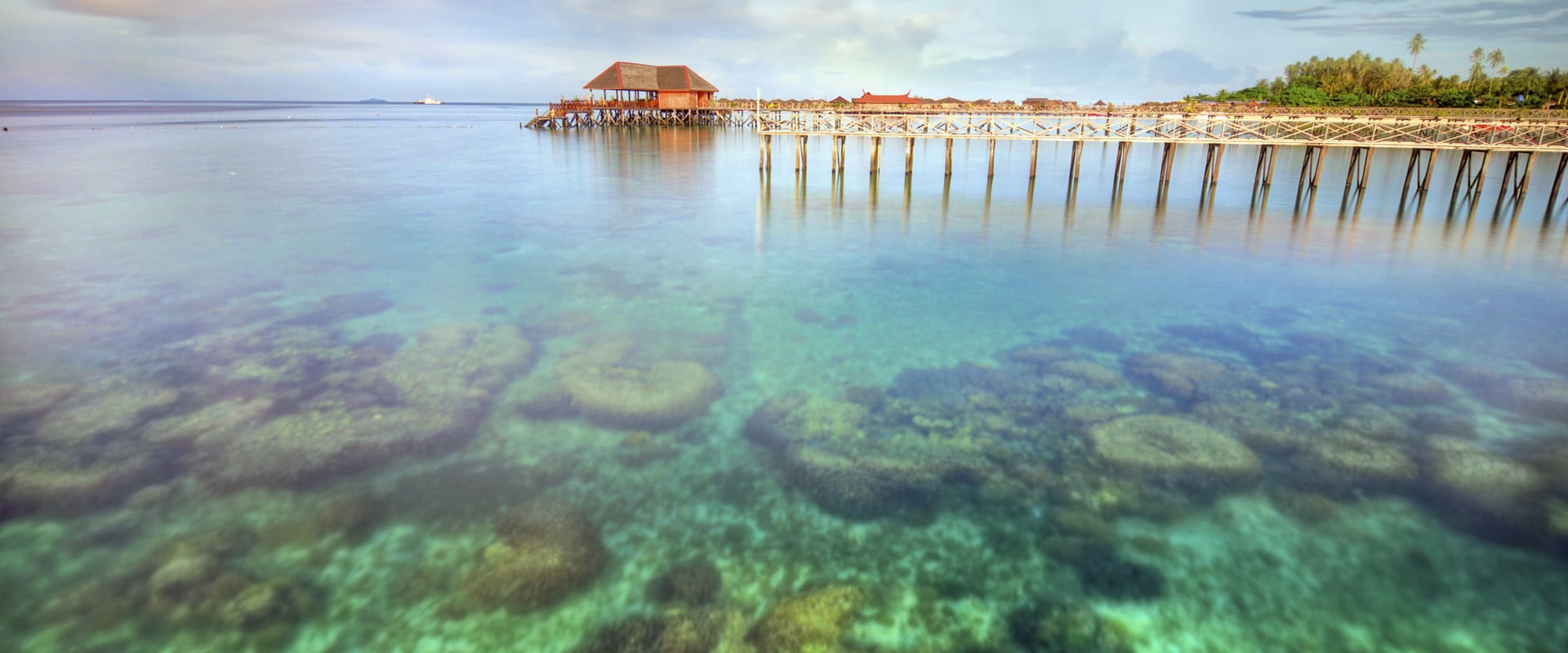Liveaboard Diving in Mabul
What to expect on a Mabul liveaboard
Liveaboard diving in Mabul will ensure divers time to explore the island's dozen distinct dive sites. Two square kilometers of healthy reef perched on the edge of the continental shelf slope out to 25-30 meters deep, creating homes for ocean species rarely seen outside of Mabul. Primarily serving as a fishing village for hundreds of years to the Bajau people, the 50-acre oval-shaped island with its picturesque white sandy beaches became a popular diving location in the 1990s - at first because of its proximity to Sipadan - but has since become a destination for scuba diving in Malaysia in its own right.
Mabul underwater
Mabul liveaboards guarantee divers will see thousands of vibrant fish and corals. Water temperatures range from 27 to 29 degrees Celsius, and diving suits divers of all levels. The waters are relatively shallow, and sandy bottoms are prevalent on all sides of Mabul Island. Located close to Borneo's mainland shores, the waters off of Mabul are rich with nutrients and abundant in life.
All dives in the area conveniently have a top reef at safety stop depths of 5 meters so that the underwater admiration can continue to the last minute of a dive.
Numerous types of cephalopods can be found: flamboyant cuttlefish, mimic octopus, bobtail squids, and blue-ringed octopus. Various types of gobies can be found, including the spike-fin goby, black sail-fin goby, and metallic shrimp goby. Many species of frogfish are common sightings, along with almost all types of scorpion fish.
There is no doubt about it - Mabul is a muck divers macro paradise!
Dive sites of Mabul
Liveaboards in Mabul will visit numerous dive sites in the area, which may include;
Paradise - never fails to impress with its rich forest of colorful corals - particularly the rapidly growing, distinctive Staghorn coral. Amongst the safety of the coral's cylindric tubes, divers can spot the richly-colored mandarin fish. Divers can also spot Blue-spotted mask rays and the Whiptail rays.
Coral Reef Garden East of Mabul island, Coral Reef Garden is a great place to experience much diving. Easy depths of 5-15 meters offer a wealth of crabs, shrimps, nudibranchs and seahorses.
Seaventure Platform Scuba diving, the current-protected Seaventure Platform, presents divers with plenty of air to explore all the old oil rig has to offer. Yellow, red, and black frogfish are often seen about 15 meters below. Lionfish, pygmy seahorses, nudibranchs, and ghost pipefish can also be found throughout the wreck. This dive site is also great for night diving and perfect for macro photo opportunities.
Lobster Wall consists of three walls between 35-37 meters separated by sloping reefs. The walls are covered in soft hanging corals and sponges in blues, yellow, and oranges, providing a healthy habitat for colorful nudibranchs. Sea fans also host pygmy seahorses, turtles, schools of yellow snapper, ribbon eels, and even, on occasion, cuttlefish. Stronger currents in this area can make macro photography challenging, but this is too much beauty here to miss.
Froggy Lair Scuba diving in Froggy Lair can be tricky to navigate, so staying with your liveaboard dive guides will help divers get the most out of the experience. The large, gently sloping sandy areas have wildly successful artificial reef structures. With a maximum depth of 25 meters, jacks, snappers, giant groupers, frogfish, and ghost pipe fish are abundant. Limited visibility is common but largely irrelevant because the best sites here are right under your nose.
Eel Garden Sandy seabeds at 20 meters present the perfect conditions for loads of small lairs and tunnels home to gobies, blue ribbon eels, and shrimp.
Ray Point Also known as Stingray City, Ray Point, like many other dive sites, must be accessed by boat. You'll descend directly on top of gently sloping reefs to spot crocodile fish, garden eels, blue-spotted stingrays, and parades of turtles swimming by.
Crocodile Avenue For large sea-life-loving divers, this may not be a favorite dive, but for those who appreciate macro sights, this is a haven for discovery.
Tips for divers
Scuba diving in Mabul is available year-round. However, the dry season from March through October will offer the best visibility. All rental gear must be arranged before arriving for liveaboard departure, as no spare equipment is available on the boat.
Getting to Mabul
The closest airport to Mabul is Tawau Airport, and it will take travelers approximately an hour from here to the departure port of Semporna. From Kuala Lumpur, a domestic flight will take travelers 2.5 hours to get to Tawau. Your liveaboard operator usually arranges transfers and pickups from Tawau Airport to Semporna.











